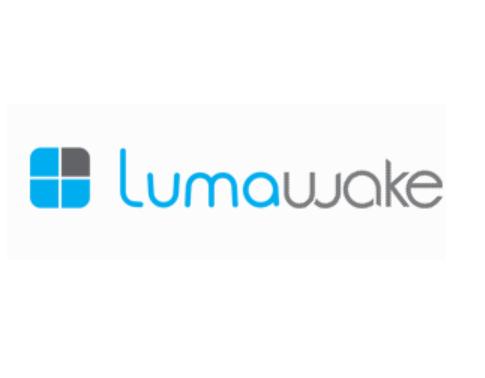
On November 19, iPhone dock makers Lumawake, kicked off their crowdfunding campaign to support their groundbreaking new smart device. The company is also a trailblazer in fund raising as it develops new techniques that other product developers will be looking at as a blueprint for their own projects.
Lumawake’s product is quite revolutionary because it takes a simple iPhone dock and makes it an important part of the user’s life. The dock charges an iPhone, uses a passive infrared sensor (PIR) to track movement, wakes the user at the best time during their sleep cycle and uses LEDs to simulate a sunrise so the user gets up gently. Another Lumawake feature is the dock’s integration into home automation systems and a developer API that lets people create their own uses for the device, making its full versatility unknown.
Greg Laugle thought up Lumawake in 1997 and says that, “I was working my way through college, and I was so busy all the time that I barely got any sleep, and I absolutely loathed my alarm clock.” At the time he thought of monitoring brainwaves to gauge the sleep state but the cost was too high at the time but things changed in 2004. “The eureka moment was when I hit upon the fact that there’s a very noticeable and easy-to-measure difference between light and deep sleep, which is simply the fact that when you’re in deep sleep, you are motionless, while when you are in light sleep, you will be moving around and rolling over and such.” By 2009 Drew Shepard had joined Greg and the two founded Lumawake.
Lumawake had wanted to use the popular crowd sourcing platform Kickstarter to get their idea off the ground but the website was reluctant to take on new products because of issues that arose with earlier projects like the Pebble watch. Even though the crowd funding efforts of Pebble raised $10 million for the e-paper watch shipping delays caused funder frustration and more strict policies from Kickstarter.
Lumawake ended up being rejected by Kickstarter two times and Chief Outreach Officer Scott Roehrick explains that, “When they made changes to their project guidelines, we delayed our launch by a month and polished the prototypes to make sure the new criteria were met. We saw it as a speed bump but nothing another month of work couldn’t solve. Submitting our project plan seemed like a formality. We never even considered that we would be denied.”
This is when the company stumbled upon the open source crowdfunding platform from Lockitron named Selfstarter. The platform comes from Lockitron’s successful $2 million campaign for the iPhone connected door lock. The feature that sets this platform apart from others is that backers will not get charged until their product is ready to ship. This way funders will not have paid for something that may not ship and the manufacturers get an idea of a market size and demand.
Scott explains why Kickstarter is losing out on product designers by saying that, “They are learning from failures on their platform but by definition are marginalizing themselves when it comes to technology projects. It’s a deliberate change in focus and I don’t think is something they’re making any apologies for. There’s going to be a massive shift to fill this void that is only beginning. We’re excited to help pave the way.”
Source: Venture Beat